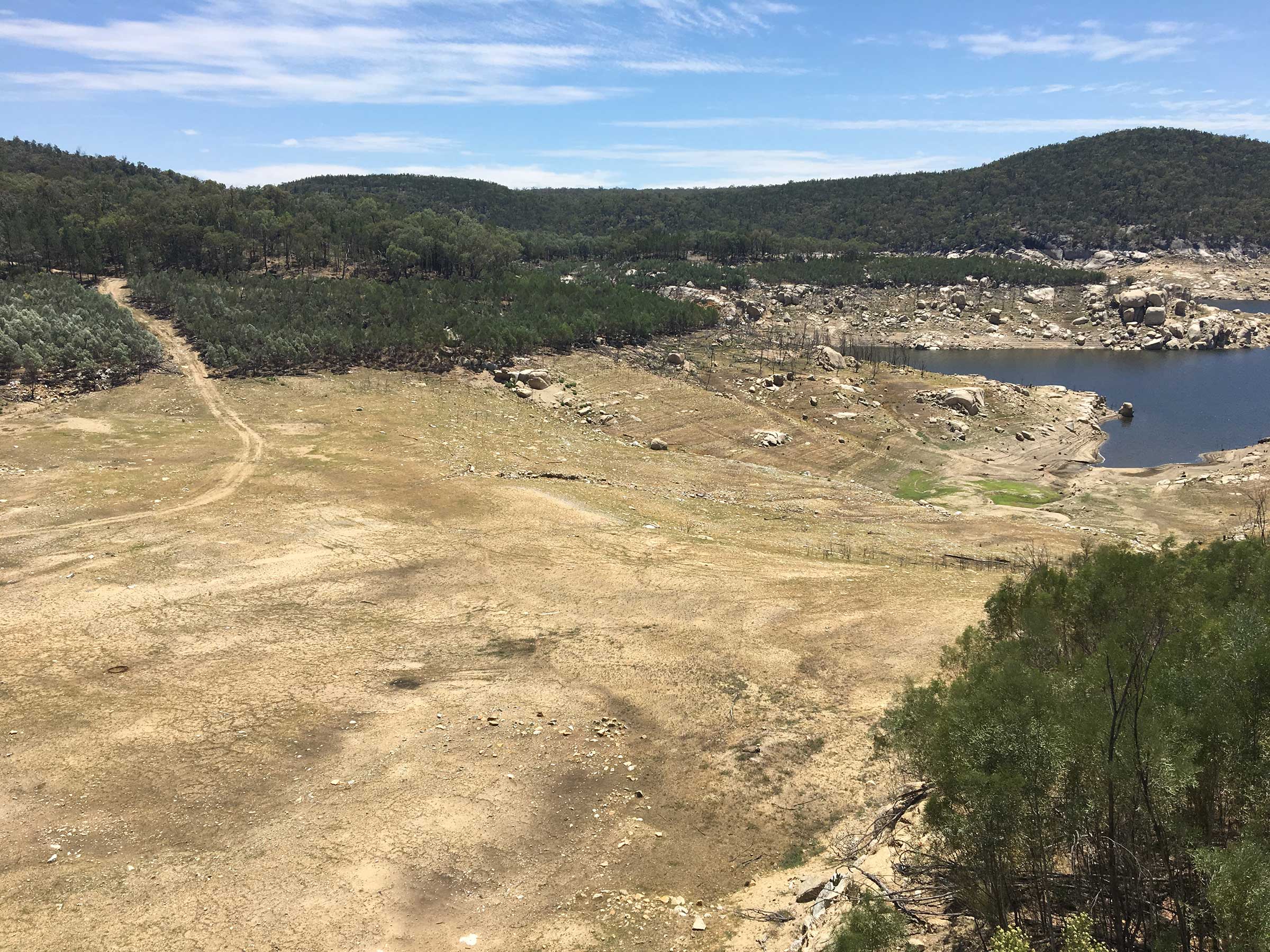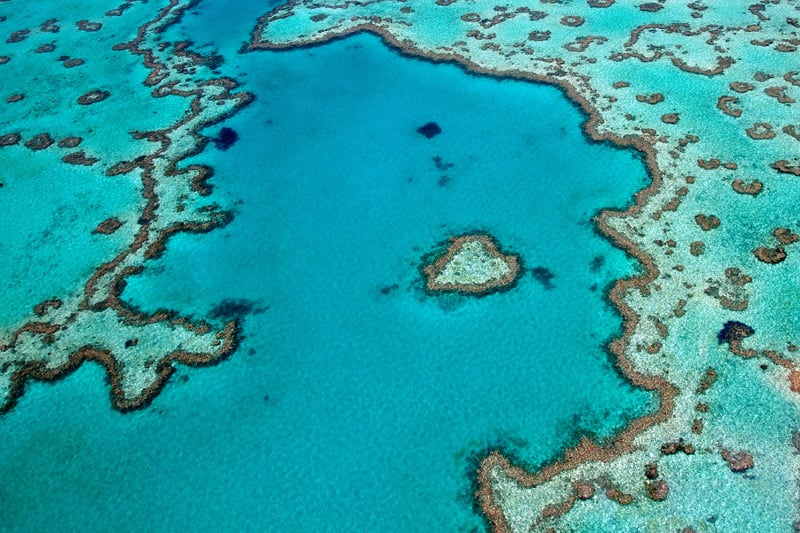What sort of world will our children have to adapt to in their retirement?
Dr Willow Hallgren
Our planet has warmed by 1.1 degrees, on average, since the Industrial Revolution, and Australia has warmed by 1.4 degrees since 1910 when records of temperature measurements began.
The predictions that scientists made about climate change 30 years ago are now our lived reality. Our climate has become harsher, and we are experiencing more extreme climatic events, which are having unprecedented impacts on the natural world and human society.

Just the beginning
Longer, hotter droughts, more extreme heatwaves, an increase in diseases and problem insects, and catastrophic bushfires have already begun. Ancient forests – from tropical and subtropical rainforests in Queensland and northern NSW to ‘Gondwana’ forests in Tasmania – have burned in mega-bushfires with almost incomprehensible losses to biodiversity. Over three billion vertebrate animals died as a result of the Black Summer bushfires in 2019/20 that burnt an area more than three times the size of Tasmania.
Severe marine heatwaves have caused three major coral bleaching events in the Great Barrier Reef in the last five years, killing 50 per cent of hard corals in shallow waters.

In your lifetime
Unfortunately, we have only just begun to experience the severe impacts from climate change; a recent Australian Academy of Science report states that even if all countries that have signed on to the Paris Agreement actually fulfil their current commitments to greenhouse gas reductions, our planet will still warm by three degrees, or more, by the end of this century. That’s only 79 years away. The report also states that ‘limiting climate change to 1.5°C is now virtually impossible’.
How will our children have to live, as senior citizens, with three degrees of global heating?

Retreat, retreat
Even with 1.5 degrees of warming, 70–90 per cent of the world’s tropical coral reefs are projected to disappear – and become all but non-existent with only two degrees of warming – along with billions of tourism dollars. At 3°C of global warming, many of Australia’s ecosystems would become unrecognisable.
With one metre of sea-level rise predicted by the end of the century, up to 250,000 Australian properties are at risk of coastal flooding. Within their lifetime, our kids will have to make tough decisions about adapting to the sea-level rise that can no longer be prevented. Should public money be spent on coastal defences to protect development in low-lying areas, given what we know is coming?

Future planning
Ultimately, retreat away from the coastline is likely to be the only feasible long-term strategy. The eventual relocation of people and infrastructure from the most threatened areas must be factored into current and future planning.
Meanwhile, on the other side of the Great Dividing Range, populations may have to retreat eastwards from inland heat and desiccation. Large swathes of the already water-stressed interior of Australia could become too hot and dry for human habitation, according to prominent Pennsylvania State University climate scientist Michael Mann.
Many inland towns face dwindling water supplies owing to declining rainfall trends, and many have already spent huge amounts of money to truck in drinking water during the most recent drought.
However, faced with the prospect of 50-degree-plus summers, some experts say highly urbanised parts of Australia may become unliveable within decades, and in the north of Australia a deadly combination of heat and humidity could make cities like Darwin uninhabitable for much of the year.
To counteract this supercharged ‘Urban Heat Island effect’, suburban car parks may have to be relocated underground and replaced with trees and greenery, and roads painted to reflect heat, not absorb it. All housing will inevitably be retrofitted with insulation. In particularly vulnerable areas a more substantial retreat from the surface may be necessary, with supermarkets and possibly entire suburbs built underground.
Behavioural and cultural adaptation to the extreme daytime heat could see us retreating indoors and sleeping during the day, and moving outdoors at night to socialise and exercise, similar to some Mediterranean countries.
Political willpower
In their report Aim High, Go Fast: Why Emissions Need To Plummet This Decade the Climate Council proposes a target of a 75 per cent cut in greenhouse gas emissions (from 2005 levels) by 2030, and for net zero emissions by 2035.
Professor Michael Mann says that the published science indicates that ‘keeping global heating to 1.5°C would require global emissions to be cut in half over the next decade’ and that this is achievable, and is ‘simply a matter of political willpower’.




All the more reason not to chop down the world’s existing street trees. This may be necessary to avoid blocking transmissions from millimetre-wave 5G small cells lining residential streets at 100-200 metre intervals, in some case only a few metres from the closest dwellings.
If temperature measurements began in 1910, as claimed, why are there records of 51.7 at Bourke 1909 , Walgett 52.8 1878 , 51.7 Longreach 1901 , 53 Cloncurry 1889, clearly this is a false claim and could the good doctor kindly provide evidence of temperatures higher than these that have occurred since the global warming fear narrative was started by the Club of Rome in the 1960’s.
The answer is in understanding the difference between weather and climate: https://www.echo.net.au/2019/03/weather-climate-whats-difference-really-matter/
Quite correct Anton. The Bureau of Meteorology submits temperature data well back into the 1800’s for Melbourne, Sydney and many other Australian weather stations to the UK’s Climatic Research Unit for inclusion in the CRUTEM and HadCRUT datasets that are used by the IPCC and others. Presumably the BoM would not submit this data if it had serious doubts about its quality. All up, to say that “records of temperature measurements: (surely “temperature records would be adequate) didn’t start until 1910 is blatant nonsense.
It would be a great gesture if Byron Council read this report and seriously addressed the scientific factors. Seafront development still continues eg. Elements Byron Bay. Yes, the nightmare will be inherited by future generations. That is why we must ignore Climate Denialists and immediately implement policies addressing the present and future sea-level rises.
Nature doesn’t care about climate denialists. If we through our behavior alter the atmosphere as we have we then have to deal with all of the various consequences that creates no matter what the denialist want to believe.
Jo Faith !! Byron Shire council has declared a Climate emergency without ratepayers Input.
and have requested on several occasions to justify the declaration ?? To date no response or factual evidence.. they should think very carefully before declaring
a emergency in future.. and more so look up the meaning of Emergency !! Maybe you Jo Faith could enlighten us all as to why the Shire council has declared a Climate emergency??? In layman’s terms would suffice !! Oh please don’t mention erosion
On the Beaches this is a natural occurrence
That has taken place for over a hundred years.. 60’s , 70′ s 80′ s 90′ s 2000’s
Or sea level rises !! Those excuses have been
Debunked time and time again ..
Also Jo could you please explain this word you all use when one has a different view on Global Warming.. denialist ??
Barrow old son, you still digging, that is your denialism.
Joachim not recognising youth mental health has risen by 40 % because of eco anxiety is denialism … !!!
Yes, the youth anxious…about the Climate Catastrophe that they will inherit!
Joachim you are in denial just living
In mainstream taking advantage of Fossil fuels every day …” do as i say not as i do”
Until you wean yourself from fossil fuels
You will always be a hypocrite .. probably
a nice one though ..
Barrow old son, you don’t know anything about how I live so your rambling is just meaningless drivel. But I am here to assist you, I’ve got the solar power plant upstairs which over any year puts back into the Grid more than I draw out of the Grid, so, you most welcome to use my excess produced Green electrons. Also I don’t own a car. How am I doing, just for starters?
Good work Joachim, just one more small transition to a well positioned cave with cold and cold running water is required to meet the greens criteria for being a responsible cave dweller, by the way bicycles are also banned as carbon dioxide was produced during production. You will also have to eat raw food as heating produces carbon dioxide. Can you not see your loonacy?.
Joachim, just because you opt to live like a cave dweller don’t expect the rest of us civilised people to do the same. Your green fanaticism is not shared by normal people nor accepted as a healthy way of life. By the way, where were your solar panels produced?. China maybe by slave labour, was there a shipload of CO2 produced during that process?, were they imported here by wind power?. Try as you may, you fool no one. Don’t try to influence peoples lifestyles, the average Aussie senses disingenuous lefty’s propaganda from a huge distance.